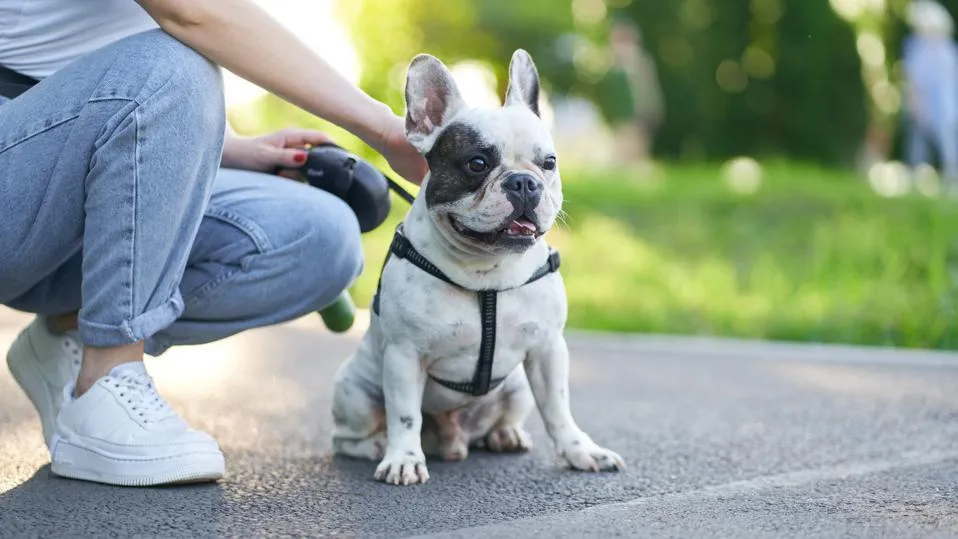The Great Dane, often referred to as the “Apollo of Dogs,” is a breed that captures hearts with its imposing size and gentle nature.
These majestic canines have been turning heads and winning affection for centuries, but there’s much more to them than just their impressive stature.
Whether you’re considering bringing a Great Dane into your home or simply curious about these gentle giants, this guide will provide you with everything you need to know about this remarkable breed.
The History and Origin of Great Danes
Great Danes, despite their name, aren’t actually Danish at all.
These magnificent dogs have their roots in Germany, where they were originally bred for hunting large game like boars and bears.
The breed’s history dates back to the 16th century, evolving from a mix of English Mastiffs and Irish Wolfhounds.
Initially known as the German Boarhound, the breed’s name was changed to Great Dane in the 1700s.
This change was likely due to political tensions between Germany and other European countries.
Today, they’re recognized as Germany’s national dog breed, known there as Deutsche Dogge.

Physical Characteristics of Great Danes
When it comes to size, Great Danes are truly in a league of their own. Here are some key physical traits:
- Height: Males typically stand 30-32 inches at the shoulder, while females are 28-30 inches.
- Weight: Adult males can weigh between 140-175 pounds, females 110-140 pounds.
- Coat: Short, smooth, and comes in various colors including fawn, brindle, blue, black, harlequin, and mantle.
- Lifespan: Unfortunately, like many large breeds, Great Danes have a relatively short lifespan of 7-10 years.
Fun fact: The tallest dog ever recorded was a Great Dane named Zeus, who stood an incredible 44 inches at the shoulder!
The Great Dane Temperament: Gentle Giants Indeed
Despite their intimidating size, Great Danes are known for their gentle and friendly nature.
They’re often described as “gentle giants” due to their calm and patient demeanor.
Here are some key aspects of the Great Dane temperament:
- Affectionate: Great Danes are incredibly loving and form strong bonds with their families.
- Patient: They’re generally excellent with children, though supervision is always recommended due to their size.
- Laid-back: Despite their hunting heritage, modern Great Danes are quite low-energy and content to lounge around.
- Social: They typically get along well with other pets and enjoy meeting new people.
However, it’s important to note that early socialization and training are crucial to ensure these large dogs are well-behaved and manageable.

Caring for Your Great Dane
Owning a Great Dane is a big responsibility – literally! Here are some essential care tips:
Nutrition
Proper nutrition is crucial for Great Danes, especially during their rapid growth phase.
They require a high-quality, large-breed specific diet to support their massive frames and prevent health issues.
Adult Great Danes typically eat 6-10 cups of food per day, divided into two meals.
Exercise
While not as high-energy as some breeds, Great Danes still need regular exercise to stay healthy.
Aim for 30-60 minutes of moderate activity daily, such as walks or play sessions.
Be cautious not to over-exercise young Great Danes, as this can lead to joint problems.
Grooming
Despite their size, Great Danes are relatively low-maintenance when it comes to grooming.
Their short coats require weekly brushing to remove loose hair and distribute skin oils.
Regular nail trims, ear cleaning, and dental care are also important.
Health Concerns
Like all breeds, Great Danes are prone to certain health issues. Some common concerns include:
- Bloat (Gastric Dilatation-Volvulus)
- Hip dysplasia
- Heart problems
- Cancer
Regular vet check-ups and a healthy lifestyle can help mitigate these risks.

Training Your Great Dane
Training a Great Dane is essential due to their size. Here are some tips:
- Start early: Begin training and socialization as soon as you bring your Great Dane home.
- Be consistent: Use positive reinforcement techniques consistently.
- Focus on leash training: A well-trained Great Dane on a leash is crucial given their strength.
- Teach basic commands: “Sit,” “Stay,” “Come,” and “Leave it” are essential.
- Socialize extensively: Expose your Great Dane to various people, animals, and situations.
Remember, patience is key when training these gentle giants!
Living with a Great Dane
Before bringing a Great Dane into your home, consider these factors:
- Space: They need room to move and stretch out comfortably.
- Cost: Food, vet bills, and supplies for a dog this size can be substantial.
- Time: They require attention, exercise, and training.
- Lifespan: Be prepared for a shorter time with your pet compared to smaller breeds.
Great Danes in Popular Culture
Great Danes have left their mark on popular culture. Some famous examples include:
- Scooby-Doo, the cowardly yet lovable Great Dane from the animated series
- Marmaduke, the mischievous comic strip character
- The Great Dane in Disney’s “The Ugly Dachshund
These portrayals have only increased the breed’s popularity over the years.

Is a Great Dane Right for You?
Great Danes can make wonderful companions for the right owners. They’re ideal for those who:
- Have plenty of space
- Can handle their size and strength
- Are prepared for the costs associated with a large breed
- Want a calm, affectionate, and loyal companion
However, they may not be suitable for:
- First-time dog owners
- Those living in small apartments
- People unable to provide sufficient exercise and attention
Ultimately, the decision to bring a Great Dane into your life should be made carefully, considering all aspects of ownership.
In conclusion, Great Danes are truly remarkable dogs that offer a unique blend of size, gentleness, and affection.
While they come with specific care requirements and potential health concerns, for the right owner, a Great Dane can be an incredibly rewarding companion.
Whether you’re looking to add one to your family or simply admire them from afar, there’s no denying the majesty and charm of these gentle giants.
Breed information
| Characteristic | Information |
|---|---|
| Breed Name | Great Dane |
| Other Names | German Mastiff, Deutsche Dogge |
| Origin | Germany |
| Group | Working Group (AKC) |
| Height | Males: 30-34 inches (76-86 cm); Females: 28-32 inches (71-81 cm) |
| Weight | Males: 140-175 pounds (64-79 kg); Females: 110-140 pounds (50-64 kg) |
| Coat | Short, smooth, and glossy |
| Colors | Fawn, brindle, blue, black, harlequin (white with black patches), mantle (black and white) |
| Lifespan | 7-10 years |
| Temperament | Friendly, gentle, loyal, and affectionate; known as “gentle giants” due to their calm and loving nature |
| Energy Level | Moderate; enjoys daily walks but also content to lounge indoors |
| Exercise Needs | Moderate; requires daily walks and some playtime, but should avoid excessive exercise while still growing due to joint health concerns |
| Trainability | Highly trainable and eager to please, but early training and socialization are essential due to their large size |
| Intelligence | Very intelligent; excels in basic obedience and can be trained for advanced tasks |
| Good with Children | Excellent with children; gentle and patient, though supervision is needed due to their size |
| Good with Other Pets | Generally good with other dogs and pets, especially if socialized early; may be aloof with unfamiliar animals |
| Shedding | Moderate shedding; regular brushing can help manage loose hair |
| Grooming Needs | Low grooming needs; regular brushing and occasional baths are sufficient |
| Barking Level | Low to moderate; typically quiet but may bark to alert |
| Space Requirements | Best suited for homes with ample space; needs room to move around, but can adapt to apartment living if exercised sufficiently |
| Socialization | Requires early socialization to prevent any timidness or fearfulness in unfamiliar situations |
| Health Issues | Prone to health issues such as hip dysplasia, bloat (gastric torsion), heart disease, hypothyroidism, and Wobbler’s syndrome |
| Diet | Requires a high-quality, large-breed diet; portion control is essential to prevent obesity and reduce risk of bloat |
| Affection Level | Very affectionate and family-oriented; forms strong bonds with family members |
| History | Originated in Germany as a hunting dog for large game like boars; later bred as a companion and guard dog |
| AKC Recognition | Recognized by the American Kennel Club in 1887 |
| Ideal Living Conditions | Best suited for homes with space to accommodate their size; enjoys spending time indoors with family but requires daily outdoor exercise |
| Notable Characteristics | Known for their large size, gentle temperament, and striking appearance; one of the tallest dog breeds |
| Best Activities | Enjoys long walks, moderate playtime, and light running; not suited for high-impact activities while still growing due to their size |
| Suitability for First-Time Owners | Suitable for first-time owners if they are prepared for their size, exercise needs, and potential health issues |
| Protective Nature | Protective but not aggressive; makes a good watchdog due to their size and imposing presence |
| Playfulness | Playful and enjoys interactive games, especially with family members; loves fetching toys and socializing |
Sources:
- American Kennel Club (AKC): Great Dane Information
- DogTime: Great Dane Breed Information
- The Kennel Club: Great Dane Breed Standard
















